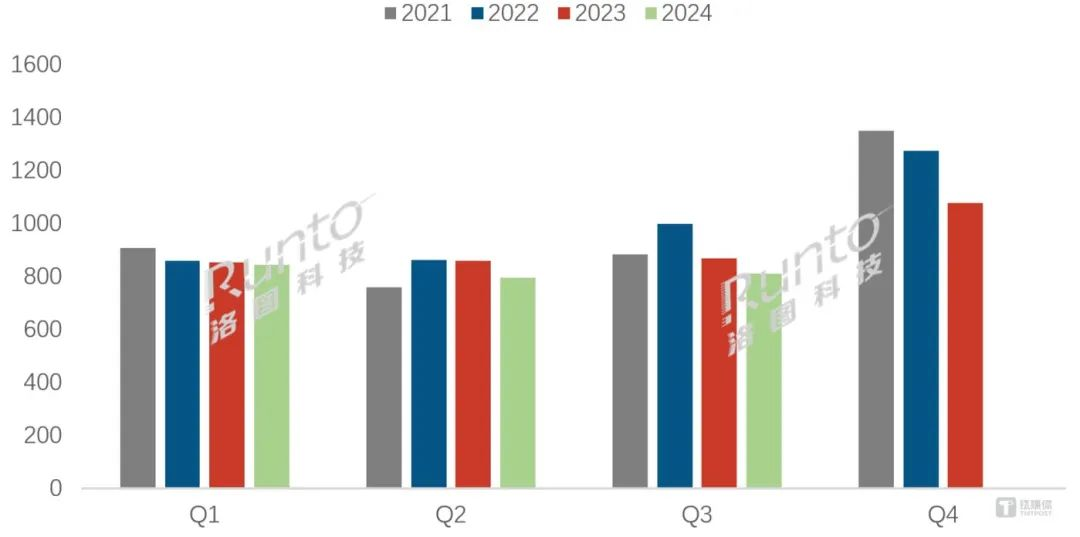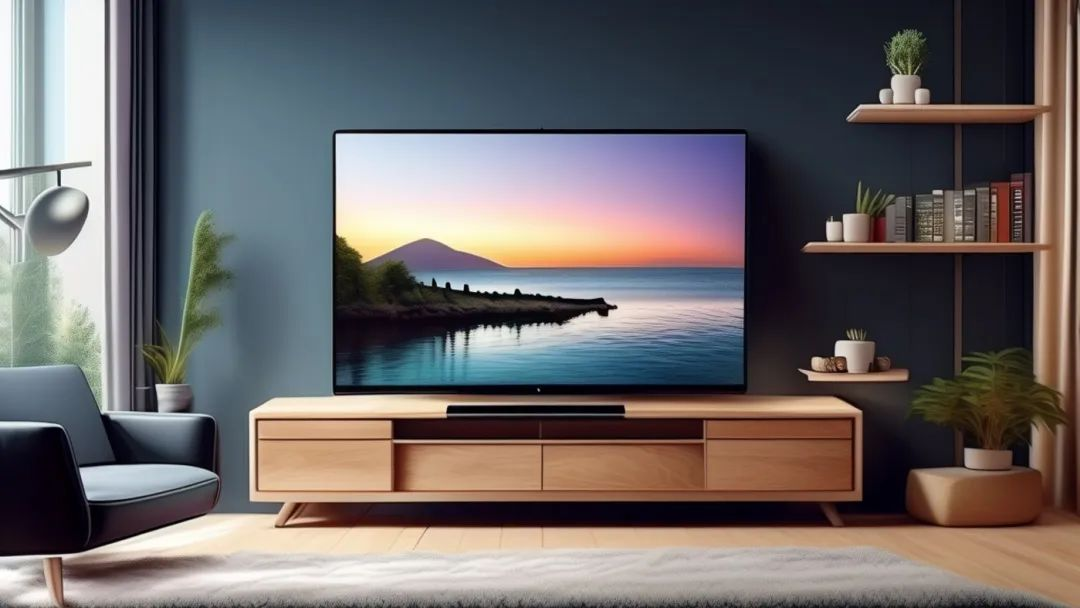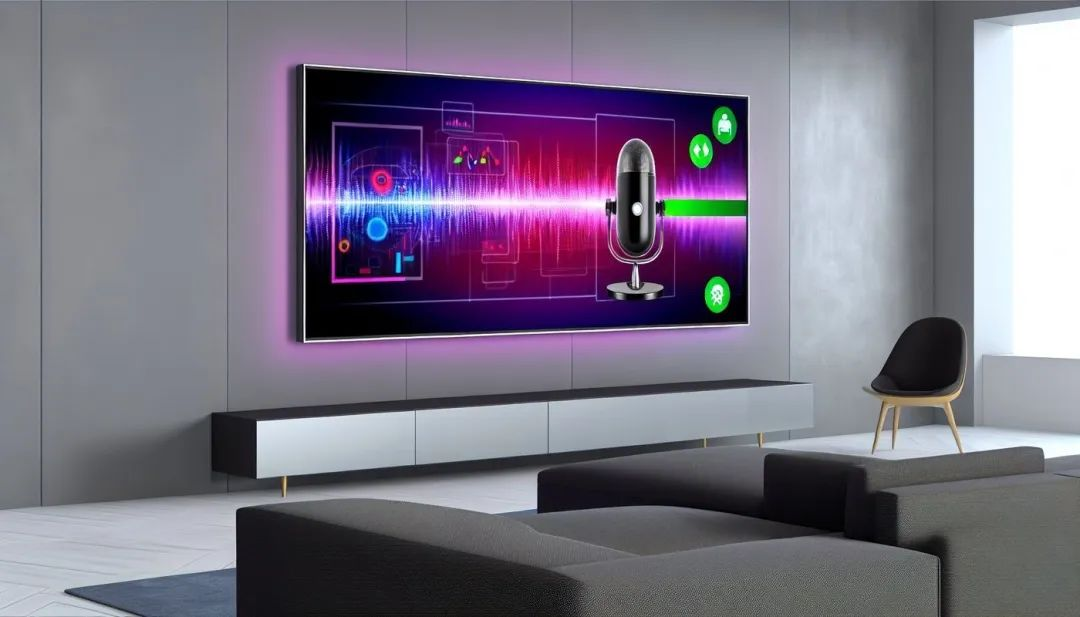TVs are getting more expensive, so why are they selling better? Quoted from:Sohu This past summer was a feast for sports fans, with the UEFA Cup, America's Cup and the Olympics, viewers enjoyed one exciting match after another. The TV, as the entert
TVs are getting more expensive, so why are they selling better?
Quoted from:Sohu
This past summer was a feast for sports fans, with the UEFA Cup, America's Cup and the Olympics, viewers enjoyed one exciting match after another. The TV, as the entertainment hub of the family, has always been the link that brings families together, and has also become one of the best companions for watching sporting events.
However, in recent years, as the screens of mobile phones and tablet PCs get bigger and bigger, coupled with the improvement of display quality and changes in usage habits, TV is being abandoned by more and more Chinese users. Young people in particular, even at home, prefer to lie in bed and use their mobile phones to watch the game while discussing it with friends and online friends.

Against this backdrop, the domestic TV market delivered a relatively poor performance in the second quarter. Surprisingly, sales in the domestic TV market picked up in the third quarter. According to data released by avc-mr.com, the retail volume of China's colour TV market in Q3 2024 was 0.7 per cent year-on-year, while the retail value increased by 14.4 per cent year-on-year.
‘The colour TV market stopped falling and rebounded mainly thanks to the old-for-new policy that was carried out nationwide at the end of August, boosting demand for energy-efficient products in colour TVs.’ Liu Fei, research director of the consumer electronics division of AVC, told TMTPOST APP.
The rebound in sales is more dependent on market subsidies, and from the perspective of shipments, the third quarter of this year is still in a downward channel. For the domestic TV market, the pressure and challenges still exist.
Shipments continue to fall as sales pick up
The past year of 2023 can be considered a grey year for China's TV market, with shipments of 36.56 million units last year, a year-on-year plunge of 8.4%, and shipments hitting a new low in the last decade. And at the time, the general sentiment of the market was still relatively positive, believing that growth would resume in 2024, supported by favourable factors in all aspects. And from the performance of the first half of the year, the domestic TV market still could not get rid of the ‘-’ prefix.
To the third quarter, the market was expected to continue the momentum of decline, but the sales side of the harvest rose. In this regard, a number of TV brands have told TMTPOST APP, this is more or ‘trade-in’ policy stimulus. It is understood that the national trade-in policy for large home appliances market pull is very obvious, especially after July, the market heat soared, the major domestic TV brands are launching a / two energy-efficiency level of new products, and listed a lot of very cost-effective products.
According to GfK's retail monitoring, in September 2024, the share of retail sales of colour TVs with primary/secondary energy-efficiency grade products reached a record high, with the share of online retail sales amounting to 24.1%, an increase of 10.4 percentage points compared with the same period of last year, and the share of offline retail sales amounting to 48.3%, an increase of 23 percentage points compared with the same period of last year.
Zoey He, an analyst of GfK's Chinese home appliance division, told TMTPOST APP that based on the current consumption heat, the old-for-new policy has gained tangible results, effectively promoting the high-quality development of the colour TV market. The sales during the National Day, also a double line of significant growth.
The rise in sales is the stimulus of the policy, but from the point of view of shipments, the third quarter continues to fall. Data from Runto Technology shows that in the third quarter of 2024, the branded whole set shipments in China's TV market were 8.115 million units, a decline of 6.6% over the same period in 2023, a decline that was slightly narrower than the second quarter, but wider than the 4.2% decline in the first half of the year.

Image credit: Runto Technology
Looking deeper, the decline in shipments in the third quarter is the result of a combination of reasons. On the one hand, the impact of unfavourable sales during the 618 period in the second quarter was carried over to the third quarter. Data shows that the sales volume and sales value of this year's ‘618 promotion’ (May 20-June 23) fell by 21.6% and 15.8% respectively, coupled with the fact that July-August is the traditional off-season for TV sales, resulting in consecutive year-on-year declines in shipments.
On the other hand, although the trade-in stimulated the market's enthusiasm, it was more for large-size medium- and high-end products. On the channel side, the pace of replenishment is more lagging, superimposed on the shrinkage of small-sized TVs and the relative tightness of large-sized supplies, resulting in an overall year-on-year decline in shipments for the three months of the third quarter.
High-end TV is more popular
Leaving ‘small brands’ not much of a chance
In the market instability, especially in the downward phase, is a reshuffle of the industry, but also a test of the brand's ability to resist pressure. From the current situation in the domestic market, the market concentration is getting higher and higher, leaving small brands and new brands to break through the difficulty is increasing.
According to RUNTO data, in the third quarter of 2024, the top 8 brands in China's TV market, namely Hisense, Xiaomi, TCL, Skyworth, Changhong, Konka, Huawei, Haier, and Haier with their sub-brands shipped a total of 7.8 million units, which together accounted for 96.1% of the overall market share, and the degree of concentration (CR8) rose by 1.1 percentage points over the same period in 2023. The total third quarter shipments of the four major foreign brands, Sony, Samsung, Sharp and Philips, were less than any of the eight major national brands, and continued to decline sharply year-on-year, with a market share of less than 5 per cent, and a long time at the bottom of the market.
A consumer told TMTPOST APP, TV is not like mobile phones, is a low-frequency replacement of electronic products, so in the purchase will be more biased towards the choice of brand, the head of the brand in the quality as well as after-sales and other aspects are more secure.
Outside of the industry pattern, some potential market upgrades are becoming more and more apparent in the TV market in the third quarter. As mentioned above, the retail volume growth of the colour TV market in the third quarter was 0.7%, but the retail value growth was 14.4%, and the huge difference between these two figures is also showing the upgrading of the structure of the TV industry. While TVs are getting more and more expensive, high-end TVs have taken the lead in the recovery.
Runto pointed out that the performance of the average market price is partly due to the fact that TV manufacturers did not adjust prices with the panel price drop in the third quarter after raising the selling price of the whole set in response to the panel price hike in the second quarter, and more importantly, partly due to the fact that the product structure of the terminal market is moving up significantly.
Price segments, the third quarter, 4,000 yuan and above the price range of sales year-on-year growth in all segments, the combined volume share of 42.7%, an increase of 6.4 percentage points, of which 5,000 yuan and above the volume share of 34.2%, an increase of 4.9 percentage points.
From a size perspective, in the third quarter, 75 inches has become the top retail size, with a volume share of 20.8 per cent, up 2.0 percentage points from the same period last year. Meanwhile, the sales share of super-large sizes of 75 inches and above reached 31.9 per cent, up 5.9 percentage points year-on-year. Among them, sales of 85 inches increased sharply by 48.4 per cent year-on-year, and sales of 100 inches increased by as much as 182.7 per cent year-on-year.
Prior to this, research firm Counterpoint Research also gave expectations of high growth in high-end TVs: in 2024, high-end TV sales and revenue are expected to grow by 22% and 15% year-on-year, respectively. From 2023 to 2028, the compound annual growth rate (CAGR) of high-end TV sales and revenue is expected to reach 10% and 4% respectively.
In addition, according to RUNTO's omni-channel retail monitoring data, Mini LED TV sales grew 470.0% year-on-year in the third quarter and 19.9% sequentially. As a result, RUNTO revised its forecast at the beginning of the year that for the whole year of 2024, the total shipment of Mini LED TVs will be more than 3 million units, compared with 920,000 units in 2023, which will be a significant increase of 231.5%.

In the view of TMTPOST APP, more and more users have higher requirements for picture quality, coupled with the iterative upgrading of display technology, more high-end TVs have become the pursuit of more people. In the last two years, the accelerated development of Mini LED TVs, which have a lower cost compared to OLEDs, has pushed the upgrading of the TV industry.
According to the data released by market research organisation DSCC, in the second quarter of this year, Mini LED completed its first overtake of OLED, taking the top spot in high-end TVs.
By the fourth quarter, the promotional data during the eleventh month also showed the rise of high-end TVs and Mini LEDs. Among them, the sales share of the online mid- to high-end market (RMB 3,000 and above) increased by 9.4 percentage points, and the sales share of the offline mid- to high-end market increased by 7.7 percentage points. The sales share of Mini LED products in the online market was 28.9 per cent, an increase of 26.4 per cent over the same period last year; the sales share of Mini LED products in the offline market was 27.4 per cent, an increase of 20.2 per cent over the same period last year.
Beyond policy stimulus
The TV market still has to seek solutions alone
From the current policy stimulus, by the fourth quarter, stacked with the National Day as well as the Double Eleven shopping festival, the TV market will continue to improve in terms of sales volume in addition to the shipments will also stop falling. Forecast data released by Runto Technology shows that in the fourth quarter of this year, branded whole-set shipments in China's TV market will reach 11.2 million units, a year-on-year increase of 4.1 per cent.
According to GfK CEC retail monitoring, during the National Day promotion period (W38-40) colour TV online retail volume was +14.8% year-on-year, and offline was +41.5% year-on-year; driven by the policy, the colour TV market structure was further improved, and the retail sales performance was even higher, with online +37.6% year-on-year and offline +77.1% year-on-year. zoey He, analyst of the Chinese home appliance division of GfK, told TMTPOST APP pointed out that it is believed that during the double 11 period, the sales heat will remain unabated, and the market retail scale will be better than the same period last year, further pulling the colour TV 2024 annual market scale growth.
For the performance during the Double 11 period, AVC forecast data shows that the retail volume scale of the colour TV market during the Double 11 promotional period in 2024 will reach 5.02 million units, an increase of 5.5% compared with the same period last year; the retail value will reach 20.8 billion yuan, an increase of 12.7% compared with the same period last year. Liu Fei said that since the implementation of the old-for-new policy, home appliances related to all seven categories to achieve growth, effectively pulling the demand for home appliances market, AVC expects that under the policy dividend, the scale of retail sales of Chinese home appliances in 2024 is expected to achieve a growth of 5.2%.
The market rebound is what the whole industry is willing to see, only this round of rebound is more policy stimulus. And from the product and user level, in China, the role of the TV and the value of the products provided, there is currently no essential transgression. According to the ‘2024 China Smart TV Interaction New Trend Report’ released by the Prospective Industry Research Institute, China's TV turn-on rate fell from 70% in 2016 to less than 30% in 2022.

Unlike mobile phones and PCs, TVs don't iterate as often, and the attributes of a large screen make their first attraction still the quality of the display as well as the content. As for the big AI model, it is also difficult for TVs to see the innovation after integration so quickly as mobile phones and PCs.
Sun Li, chief technology officer of TCL Industries, once told TMTPOST APP that AI is now very hot, is a million gold oil, which can be used everywhere. The big model understands user intent very well and is a good increment. However, when it comes to the AI paradigm now, it is more about soft and virtual things, while what we consumers use exists in physical terms.
Talking about how to improve the opening rate, Zoey He, a senior analyst of GfK's home appliance division, told TMTPOST APP that carrying the right content system, using AI for content recommendation, and improving the user's experience; reducing criticised content such as start-up ads; and creating a use scenario, for example, for gaming TVs, to consider building in a game into the TV system, or selling it in a co-sale (joint switch, etc.).
Overall, the experience is the first place, all innovation and technology iteration should be centred on improving the user experience, more detailed picture quality and better display quality is still the first place, rather than doing some unnecessary show-off addition. As for AI, more should be considered is the interaction with the user, otherwise the increased functionality may be more of a burden, in turn, contrary to the original intention of AI to make the user experience more natural.